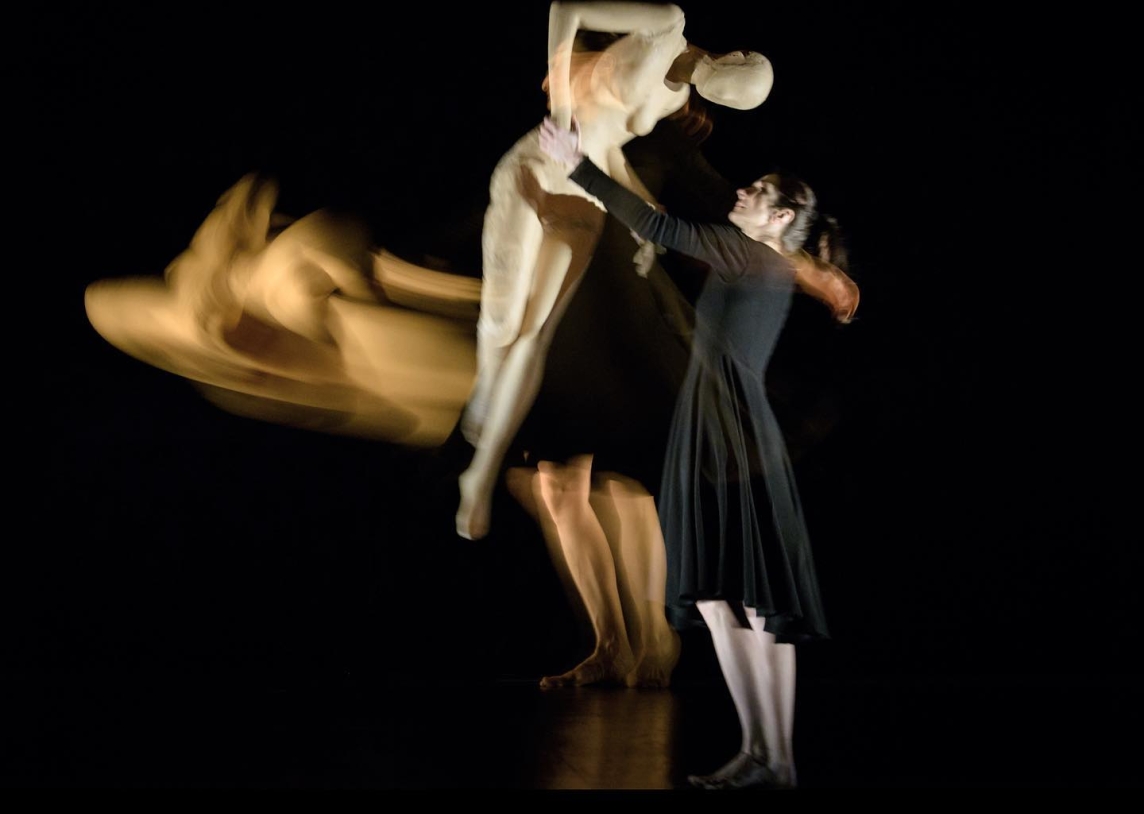- International Platform
- Content
Content
Memory becomes flesh: “The Choice” at the Vilnius theatre “Lėlė”
Author: Ieva Tumanovičiūtė
Translated by Laima Bezginaitė
The most recent Vilnius theatre “Lėlė” performance for adults “The Choice” is first of all a wonderful aesthetic experience: on the grand stage transformed into a mysterious and magical space, the bodies of people and mannequins and their fragments mysteriously float, forming weird looking combinations and dancing dances that evoke contradictory feelings. In one of them, headless male torsos merge with actors’ legs and thus create grotesque creatures that transform into surreal sexual intercourse. This and many other images of the performance become attractive in their originality and beauty and create constantly changing, ambiguous associations and meanings.
This dance of revived matter (signifying inner experiences) and a human being reveals confusion, insanity and the ability to overcome them – the dancer expands a circle of light around her with the movements of her arms, elongated by using the mannequins’ forearms. Director and puppet artist Gintarė Radvilavičiūtė based the performance on the novel “The Choice” by Edith Eger, a psychologist who experienced the Holocaust and survived the Auschwitz concentration camp. The unimaginable cruelty and horror are distanced and aesthetically summarized, because the main theme of the stage work, the same as that of the book, is not the horrible and inhumane events, but rather the journey of the survivors towards freeing themselves from this experience.
The mystery and illusion created in the performance express inner confusion and anxiety. On the stage, the main character Edith (Sigita Mikalauskaitė) moves like a puppet floating in the air. The secret of her levitation is quite hard to perceive and raises doubt about whether it is her own legs or artificial appendages moving gracefully. This dance, which connects the elements of the animate and the inanimate that director Radvilavičiūtė considers so important, creates a special impression that takes the audience above reality. A similar eerie mood and a mysterious union of a dancer and a human-shaped doll, as well as their dance, can be remembered from the director’s other performance “Sandman” (Vilnius theatre “Lėlė”, 2014), based on E. T. A. Hoffmann’s short story, her style is also recognizable in “The Picture of Dorian Gray” (Vilnius theatre “Lėlė”, 2018), but not only from her particular means of expression, but also from the gaze directed at the inside of a person.
In “The Choice”, the ghosts of recollections take up the visual shape of puppets-mannequins created by Radvilavičiūtė. A naked mannequin of a bald woman lying on her side, as realistic as a wax sculpture, headless male torsos with expressive back muscles, cracked busts, heads and legs – these yellowish, light-skinned human body shapes, skins and fragments are floating in the black space of the stage (set designer and costume designer Julija Skuratova). They resemble fragments of memories and reflect the time in their texture. It is also emphasized by the figure of a horse. The animal’s body parts are mixed with fragments of the human body.
All those weathered female, male, one-legged, one-armed mannequins are Edith’s dance partners. The dances created by the choreographer and the main dancer Sigita Mikalauskaitė express the world of emotions of a person who has experienced traumatic events. They evoke a wide range of sensations: from weirdness, fear, eroticism, and cruelty to enlightenment and liberation. Composer Rita Mačiliūnaitė’s music is memorable in its piercing piano sounds and an ambiguous mood that illustrates Edith’s conflicting inner state. The dancer’s dance with her memories evokes the themes of death, violence and destruction. The final image where numerous clay faces-masks emerge, move and re-appear on the screen as if in a bas-relief reminds of a symbolic grave of concentration camp victims.
The main character’s “over-voice” brings clarity to the performance. “If I could narrow down my whole life to a single moment, a single still picture, it would be this: three women in dark woolen coats, holding hands, and waiting for something”, sounds the voice of Edith. “Those three women are my mother, my sister Magda and me. This is our last moment together. But we don’t know it yet.“
The performance’s strength is that it is dominated by sight and movement rather than words. The verbal narration gives direction to the abstract imagery of the performance. The performance’s dramaturgical line (by playwright Virginija Rimkaitė) leads the main character down the path of inner healing. When vocalized, the story becomes somewhat simplified and features characteristics of psychological self-help books but is protected from banality by the choreography and visuals of the performance, which create depth and mystery.
Edith Eger’s therapeutic novel “The Choice” intertwines the author’s – a young Hungarian Jew ballet dancer and gymnast who was sent to Auschwitz – story of liberation from the past and her experience as a psychologist working with traumatized patients. When describing her life in the book, Eger talks about the long and complex healing process consisting of many stages – to break free from the inner prison is to realize that you cannot control your past, but you can choose how to live in the future. By basing the performance on the novel, director Radvilavičiūtė does not aim at retelling Edith’s biography or its therapeutic effect, but rather creates an independent and unique stage world and uses aesthetic means to refine the inner landscape of a suffering person’s path towards freedom. This landscape is mysterious, frightening, and ambiguous, but also elegant and hopeful.
In the dance and puppet performance “The Choice”, the fusion and transformation of the physical and the intangible (spiritual) creates a mysterious and enigmatic beauty that determines the impact of this work of art.
Published in: menufaktura.lt

